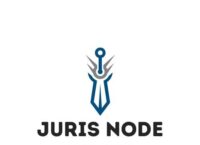India’s position as a growing economic powerhouse has brought with it the challenges of managing financial flows, including both legitimate remittances and illegal money transfers. Hawala transactions, an ancient informal money exchange system, and remittance transfers play a significant role in the movement of funds within and across borders. While remittances contribute positively to the economy, hawala transactions pose a considerable threat, facilitating illegal money flows and money laundering. This article explores India’s struggle with illegal money flows through hawala and remittance transfers and the measures taken to combat this financial menace.
Understanding Hawala Transactions
Hawala, a centuries-old money transfer system, operates outside the formal banking channels. It relies on a network of trust and personal relationships, with money moving through a series of intermediaries without any physical transfer. Hawala has historically served as an essential means for facilitating remittances from Indian expatriates to their families back home, especially in countries with limited formal banking infrastructure. However, its anonymity and lack of transparency have made it attractive to criminals seeking to move illicit funds discreetly.
The Dangers of Informal Money Exchange
The informal nature of hawala transactions makes them susceptible to abuse by money launderers, terrorists, and other criminals. Hawala operators often evade regulatory oversight, enabling them to facilitate cross-border money transfers without proper documentation or reporting. This lack of transparency poses challenges for law enforcement agencies in tracing the source and destination of illicit funds, leading to the escalation of illegal money flows.
The Role of Remittance Transfers
On the other hand, legitimate remittance transfers from Indian expatriates are an essential source of foreign exchange and contribute significantly to the country’s economy. These transfers provide financial support to families, foster investment opportunities, and stimulate economic growth. However, remittance corridors can also be exploited by criminals to disguise illegal money flows amidst the vast volume of legitimate transactions.
Money Laundering and Terror Financing
Hawala transactions have been linked to money laundering and terrorist financing activities. Criminals use hawala to integrate illicit funds into the formal financial system, making them appear legitimate. The flow of laundered money through remittance channels poses a significant challenge for regulators and financial institutions. While India has taken significant strides in enhancing its anti-money laundering framework, money launderers continue to exploit the vulnerabilities presented by informal money exchanges.
The Regulatory Response
To address the risks posed by hawala transactions and remittance transfers, the Indian government has implemented several measures. Stricter regulatory oversight and enforcement actions against illegal money operators aim to curb the misuse of hawala for money laundering and terror financing. Financial institutions are required to implement robust customer due diligence measures and transaction monitoring systems to detect suspicious activities.
The Importance of Digitalization
In recent years, digitalization has played a crucial role in managing remittance flows and combating illegal money transfers. Mobile banking and online remittance platforms have emerged as convenient and transparent channels for legitimate remittances. These digital platforms not only provide cost-effective transfer options but also help in tracking transactions, deterring illicit activities.
Global Cooperation and Information Sharing
The cross-border nature of hawala transactions necessitates international cooperation and information sharing among countries. India actively engages with other nations and international organizations to exchange intelligence on suspicious transactions and track down money launderers and terror financiers. This collaboration strengthens the global fight against illegal money flows and promotes financial integrity.
Conclusion
India’s struggle with illegal money flows through hawala transactions and remittance transfers highlights the need for a comprehensive approach to tackle financial crime. While remittances play a vital role in the economy, informal money exchange systems like hawala pose significant risks to the integrity of the financial system. The Indian government’s efforts to strengthen regulatory frameworks, adopt digital solutions, and enhance global cooperation demonstrate a commitment to combatting these challenges. By promoting transparency, encouraging legitimate remittance channels, and enhancing financial monitoring, India can minimize the risks associated with illegal money flows and protect its financial system from abuse. A united effort, involving the government, financial institutions, and international partners, is essential to safeguarding the country’s economy and promoting responsible financial practices.
If you found this article helpful, you may be interested in Advocate Vijay Pal Dalmia, along with Advocate Siddharth Dalmia‘s book, “A Guide to the Law of Money Laundering”. This comprehensive guide provides even more in-depth information on how to recognize and prevent money laundering. It’s packed with practical tips and advice for staying one step ahead of financial criminals.





